The North West Corner of Saudi Adventure
I spent over four years living in a remote compound in the northwest corner of Saudi Arabia, surrounded by a vibrant mix of Saudi locals and expats worldwide. Here, in this isolated part of the world, I learnt many things, but none so important as how to change a tire. I must've changed half a dozen tires in my four years off-roading, which is just a way of life.
This travel guide picks up where my Jordan: North to South adventure leaves off—just 20 minutes south of Aqaba, at the Dhura border crossing into Saudi Arabia, near the coastal town of Haql. You're in the right place if you're curious about discovering Tabuk and its surrounding natural wonders. And if you're planning a longer journey down the Red Sea coast, check out my Saudi Road Trip guide, which traces the route to Jeddah.
Saudi Arabia Road Trip
Back in February before leaving my job in Saudi Arabia my friends and I did a road trip down the west coast of Saudi Arabia from Tabuk to Jeddah and back.
Crossing the border from Jordan into Saudi Arabia, you’ll first arrive in Haql, a small, friendly, and somewhat rugged town in the Tabuk Governorate, tucked into the far northwest corner of the Kingdom. While Haql offers a few basic conveniences—local coffee shops, supermarkets, and surprisingly well-stocked gas stations with camping supplies—it’s not a place I’d recommend lingering. Instead, once your taxi driver has brought you across the Durrah border, continue directly to Tabuk City.
Roughly a 2.5-hour drive inland, Tabuk is a major military and administrative hub with everything you’ll need to launch your adventure. You’ll find several rental car companies at Tabuk Regional Airport, and it’s the best place to pick up a reliable 4x4 to explore the surrounding deserts and coastline.
Tabuk:
Tabuk, situated in the northwestern region of Saudi Arabia, serves as the capital of the Tabuk Province. Tabuk boasts a rich history dating back to around 500 BCE. It was a notable stop on ancient trade and pilgrimage routes, including the Syrian pilgrimage path to Mecca. The city is also associated with the Expedition of Tabuk in 630 CE, led by the Prophet Muhammad.
Highlights
Gulf of Aqaba: Tucked between towering granite mountains and the shimmering turquoise waters of the Red Sea, the Gulf of Aqaba in northwestern Saudi Arabia is one of the Kingdom’s most remarkable, yet least known, coastal regions.
The Hisma Plateau: The Hisma Plateau is one of the most striking and geologically unique regions in Saudi Arabia. Located in the northwestern part of the country, within Tabuk Province, it spans part of the ancient Hisma Desert, which stretches toward the Jordanian border and into southern Wadi Rum.
Wadi Al Disah: A picturesque valley surrounded by towering sandstone cliffs, offering opportunities for hiking, puddle bashing and exploration.
Tabuk as the Launchpad
The beauty of this part of the world won’t be found in the city but using Tabuk as a launchpad for your adventure is a great idea. If you are preparing for an adventure in Tabuk below are my recommendations.
Arrive in Tabuk (airport) & collect a 4X4 vehicle - minimum is a Toyota Fortuner or a Hilux - Make sure that this car comes with a spare tyre, recovery kit including tracks, tow rope, and compressor.
Visit Al Ramiya This treasure trove of camping gear is the one stop shop for outdoor enthusiasts and adventurers. Located Here
Buy a Farwa in Tabuk Old Town & visit the market at night https://maps.app.goo.gl/tzUUJFypD1FCWMn4A
Dinner Options
Taj Mahal – Affordable Indian food
Texas Roadhouse – Familiar Western option
https://maps.app.goo.gl/mVyfj8BQrM9o6wwU6 - Traditional Arabic Food
Accommodation Options:
Tabuk is a moderately conservative city however, the addition of nearby Giga projects like Red Sea Global and NEOM along with the longstanding airbase means that the locals are not as surprised to see international visitors but you still might be asked to wear trousers or cover up going into the mall or public buildings.
Camping in the Hisma Plateau
Towering high up into the sky, the rock faces in the Hisma plateau are scarred and weathered. Some are jagged, other are flat as if they have been sheared away by a lathe or carpentry tool. There are some that even look as though the belong under the sea. Roaming through the maze of sandstone massifs you will find Shepard’s moving large numbers of camels as they search for grazing pastures. You could stop the car anywhere and marvel at the natural beauty. Be careful where you stop though; the soft sands can be treacherous for even the most experienced off-road drivers.
I have camped in the Hisma Desert many times and hosted multiple sporting events in the area, including cross-country mountain bike races and climbing events. Last year, I lived in a Haima tent in the desert for four weeks. The access to the climbing routes in the Secret Garden is now located within the NEOM Nature Reserve, where wild animals roam free, so be careful. You cannot camp inside the nature reserve, but otherwise, you are able to free camp nearby.
For anyone visiting Tabuk I highly recommend contacting Tabuk Tours - this tour group operator was founded by Tabuk born and raised local Salem and has grown over the past few years. There isn’t much they can’t do for you. I highly recommend a night in the Hisma desert with Salem and his team. They may take you to the NEOM Nature Reserve where you can see Ostrich, Oryx, Sand Gazelle and much more. They might take you off-roading through the dunes and towering cliffs of the Hisma Desert or simply set up a fire and watch the stars whilst a local plays the Oud, an arabic guitar like instrument.
Exploring the Gulf of Aqaba
Tucked between towering granite mountains and the shimmering turquoise waters of the Red Sea, the Gulf of Aqaba in northwestern Saudi Arabia is one of the Kingdom’s most remarkable, yet least known, coastal regions. Stretching along the northeastern tip of the Red Sea, this coastline within NEOM offers a blend of ancient legend, marine richness, and cinematic wilderness.


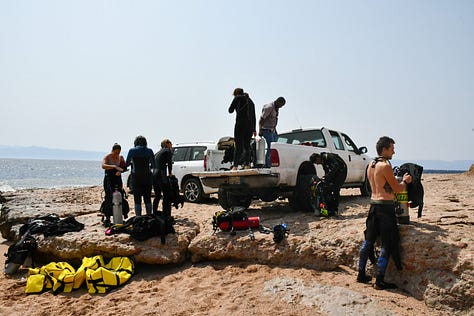
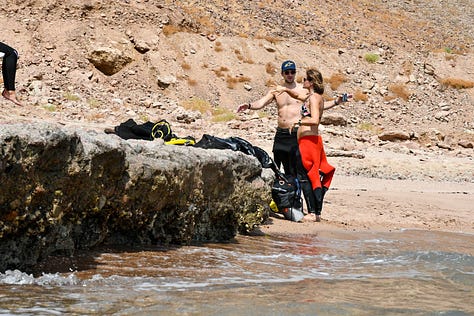
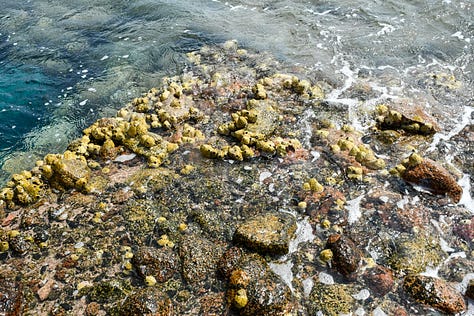
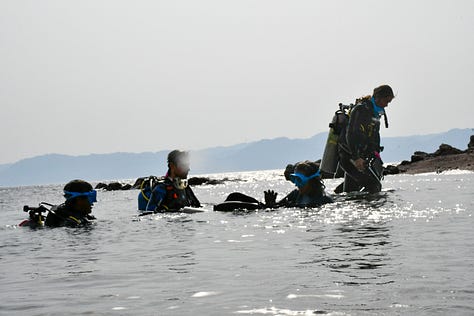
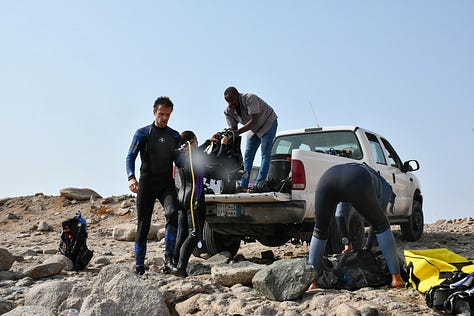

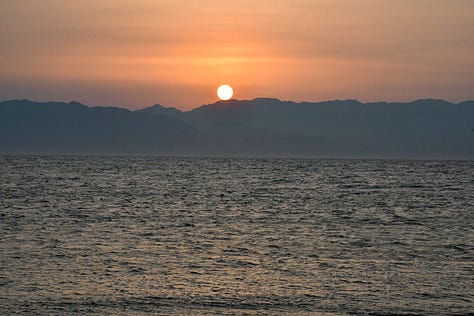
I first discovered its magic while learning to dive here, as part of a marine mapping project led by my friends in the Adventure Sports Team. We logged dives, explored untouched coral gardens, and drank Coca Cola out of glass bottles from dirty gas stations in Magna. Later that year I even helped to host a GKA kite surfing event and charted a cross-country mountain bike route along the coastal path for the 2022 edition of NEOM Titan Desert, threading through the canyons and into the formidable wind along the water’s edge.
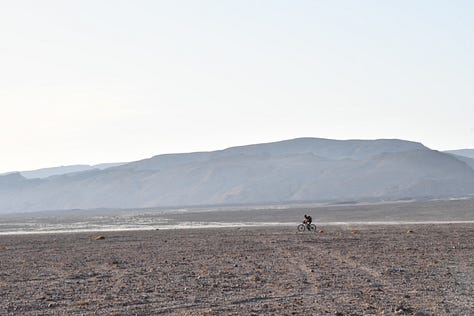
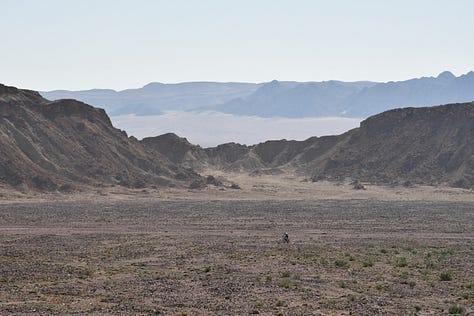
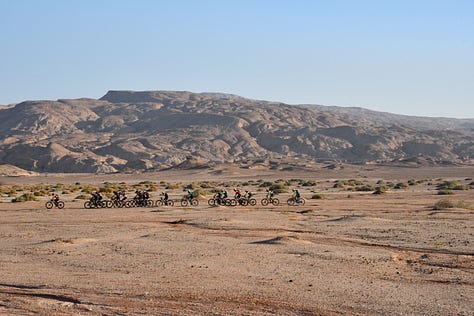
This stretch of coastline carries immense historical and religious significance. According to biblical tradition, it is said to be near the place where Moses parted the Red Sea during the exodus from Egypt. The nearby town of Magna is often referred to in local lore as where Moses and his followers settled, with Moses’ Springs still flowing in the area today.
Though parts of the old coastal highway are now closed to the public due to development and conservation efforts, it once provided one of the most dramatic road trips in the region. You could drive from the Catalina Seaplane Wreck (Location)—a haunting relic of early aviation history—all the way up to the rusting silhouette of the Georgios G Shipwreck. Friends of mine once filmed Mercedes supercars tearing down this winding road framed by sea cliffs and desert plains.
Must-See:
1. Georgios G Shipwreck (Snorkelling) - Closest to Jordan and Haql you now have to drive off-road to get to the road leading to this part of the coast. Known locally as the “Saudi Titanic,” this Greek cargo ship ran aground in the 1970s. It now rests dramatically above the reef, with its bow emerging from the turquoise water. You can snorkel around the wreck and see the vibrant reef life that has claimed it as home. Location
2. Wadi Tayeb Al-Ism (Hiking) - The second furthest North and generally restricted access from the coastal road Wadi Tayeb Al Ism is a dramatic granite canyon carved into the mountains that plunges into the sea, this wadi is one of the most striking hikes in Saudi Arabia. It’s a place where freshwater meets saltwater, and legend claims it’s where Moses led his people out of Egypt and up to the mountain and performed many miracles. Location
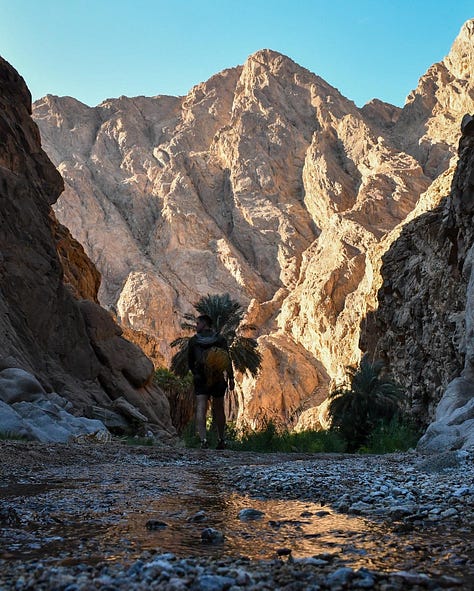
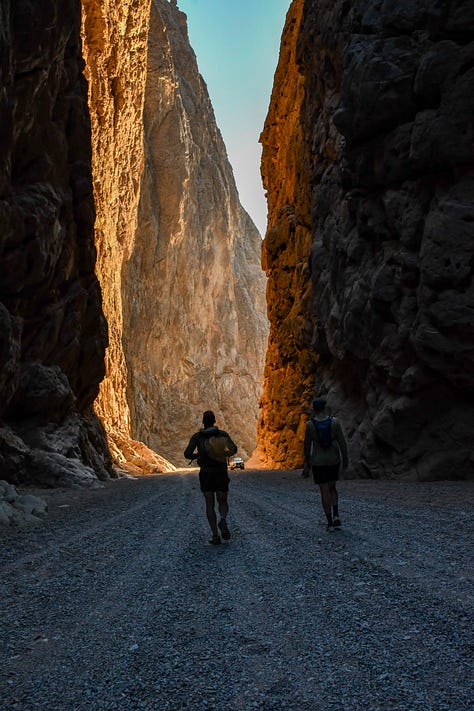
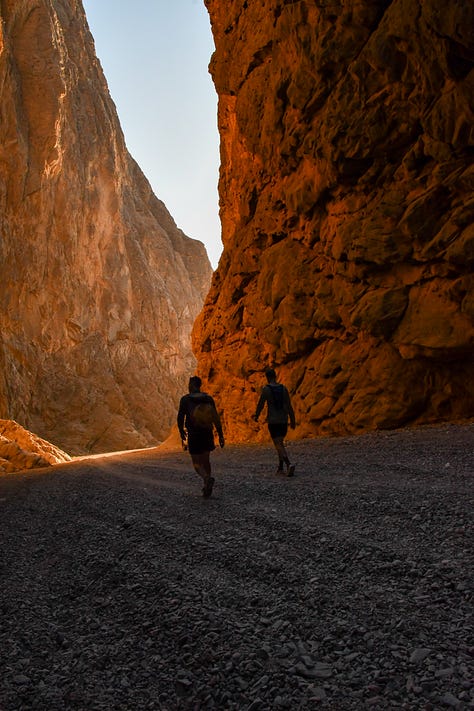
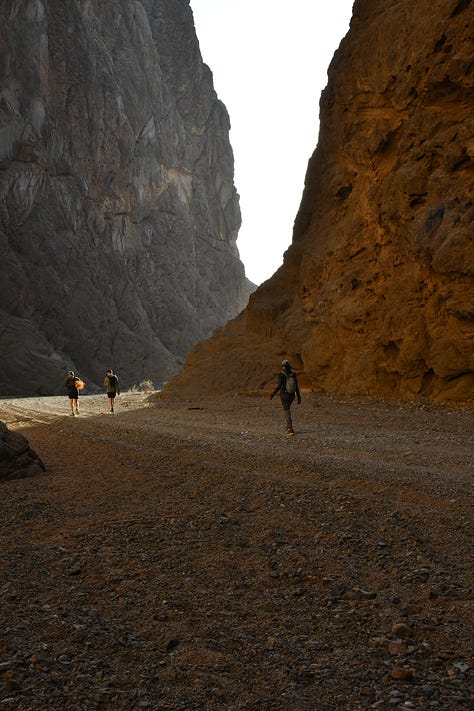
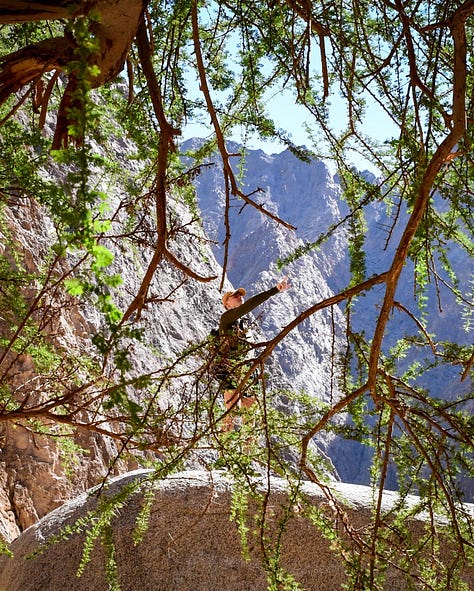
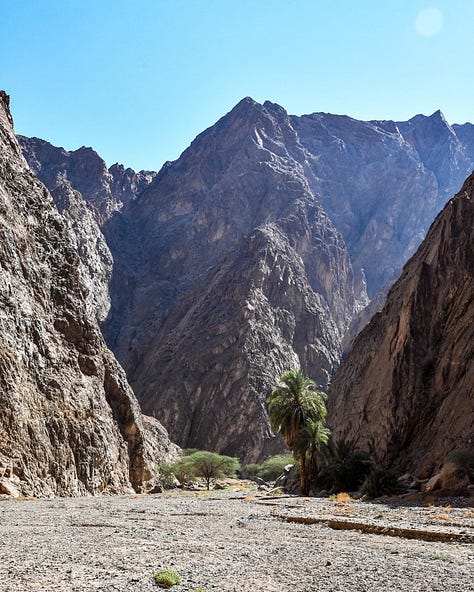
3. Wall Diving at Hasco Dive Resort- Located along the steep underwater drop-offs of the Gulf, Hasco Dive Resort offers access to some of the region’s best wall dives. Sheer coral walls drop into the blue abyss, teeming with marine life—from reef sharks to eagle rays. It’s a thrilling experience for advanced divers and an excellent training ground for those learning. Location
4. Moses’ Springs (Historical Site) - A small oasis near the now abandoned town of Magna, surrounded by palm trees and bubbling freshwater springs. Whether you subscribe to the biblical narrative or not, it’s a quiet, beautiful place to reflect on the region’s long and spiritual past. Location
Wadi Desa via Duba
From Tabuk, you can head down to Sharma, the epicentre of activity for the NEOM project. Several hotels, such as The Royal Sharma, The Royal Lazure, and the Masar Resort, are available to book if you are looking for a day on the beach or snorkelling.
After stopping in at Sharma, continue cruising down the coastline to Al Muweila. This rough-looking trucker town has one of the last remaining Ottoman forts and an exceptional spot for snorkelling and seeing Hawksbill turtles. The Ottoman fort isn’t much to look at, but you can easily pull off on the way to Duba and Wadi Al Disah. If you are getting hungry on the way, stop in at Duba’s famous fish restaurant, Al Seajans and take in the view of the Marina and Duba Old Town.
This fish restaurant itself isn’t much to marvel at. A half-finished building with a typical Arabic seating area, carpet on the floor and some plastic tables outside, but they do a great job of fish and rice. Ask for the brown rice, the fried shrimp, and the calamari, and pick a fresh fish to fry. The portions are large, and the food is messy as you’ll be pulling apart the fish with your hands, but very tasty. A warning that before it’s served, someone will come around to drape a polythene sheet over the table or carpet.
From Tabuk to Duba, you’re likely to encounter a lot of construction traffic, changing roads, and diversions. It's not the prettiest thing in the world, but once you’ve made it to Duba, you are on your way to a less chaotic section. I would make sure to stock up here in Duba on supplies and petrol, and if you need to use a restroom for one last time, as the next section of the adventure involves camping, I hope you bought a shovel at Al Ramiya.
Wadi Desa:
Wadi Al Disah, meaning “Valley of the Palms”, is a lush canyon oasis surrounded by towering sandstone cliffs, often referred to as the Grand Canyon of Saudi Arabia. It lies within the Sarawat Mountain range and is part of the Prince Mohammed Bin Salman Natural Reserve, making it both ecologically important and visually spectacular.
The wadi stretches for several kilometers through a dramatic gorge, where vertical cliffs rise up to 500 meters high on either side, and freshwater springs bubble out from beneath the canyon walls year-round—an extremely rare feature in Saudi Arabia’s arid landscape.
Lush vegetation: The wadi is full of palm groves, grass-lined pools, and natural springs that flow even in the dry season.
Towering cliffs: The sandstone formations are streaked with reds, golds, and browns, forming striking natural sculptures.
Cool microclimate: Thanks to the shade and water, Wadi Disah is significantly cooler than the surrounding desert, making it perfect for hiking and picnics.
Activities
4x4 drives through the valley floor
Guided hiking and photography trips
Traditional picnics and tea with local Bedouin families
Camping (best in a designated area like Mandarin Oasis)
Birdwatching and spotting wildlife
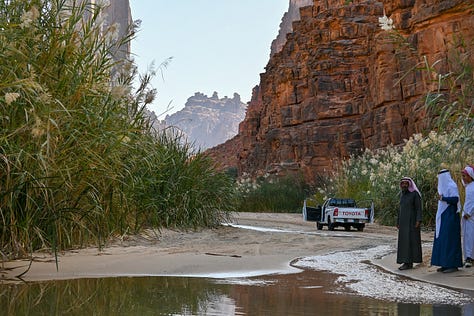
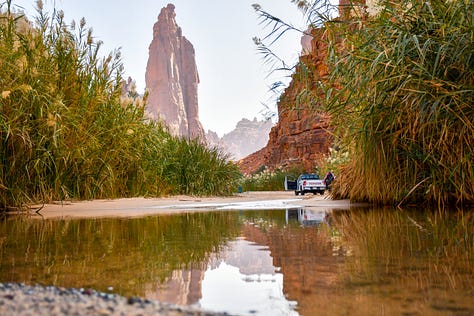
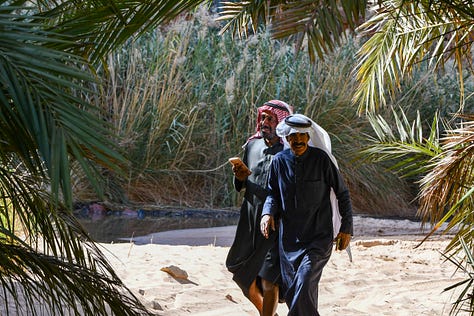
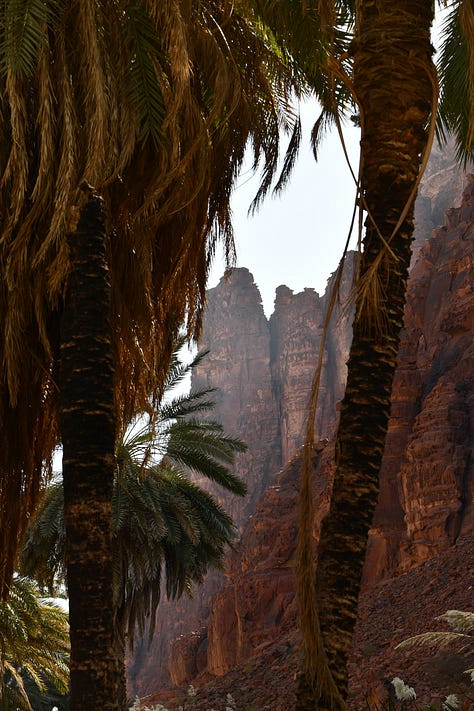
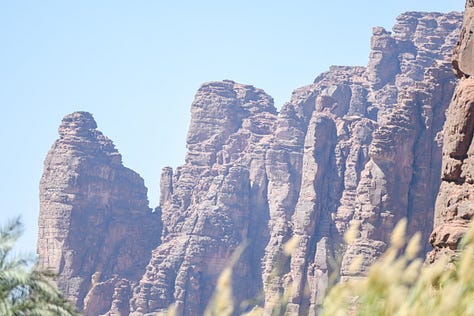
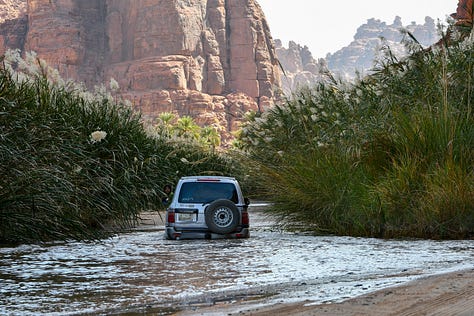
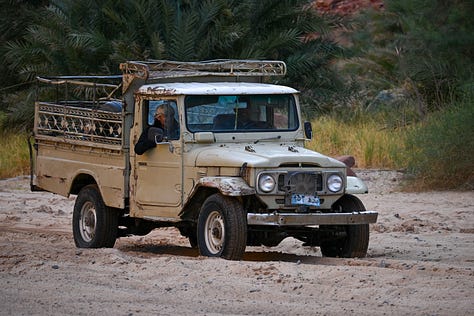

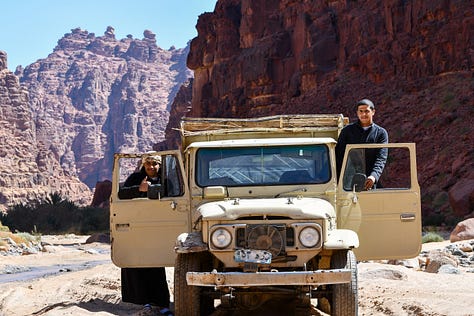
Mandarin Oasis
Location: On the edge of Wadi Disah near the village of Al Disah
Coordinates: Mandarin Oasis Map
The Mandarin Oasis is a beautiful, locally-run organic farm and picnic site located at the entrance to Wadi Disah. It’s a refreshing, shaded space filled with citrus trees—particularly mandarins and oranges—and offers an ideal base to camp before or after exploring the valley.






